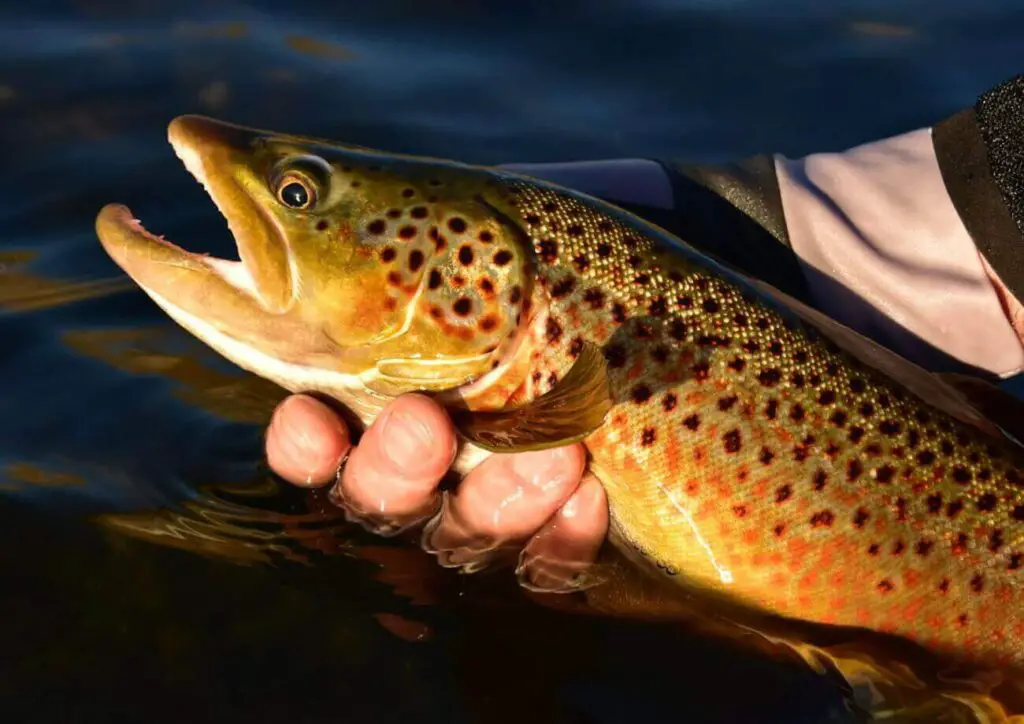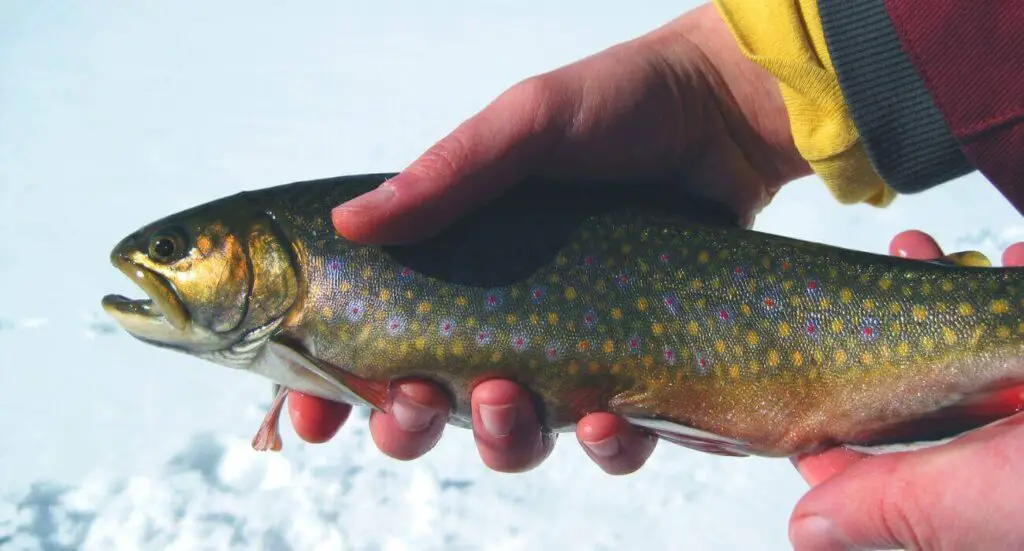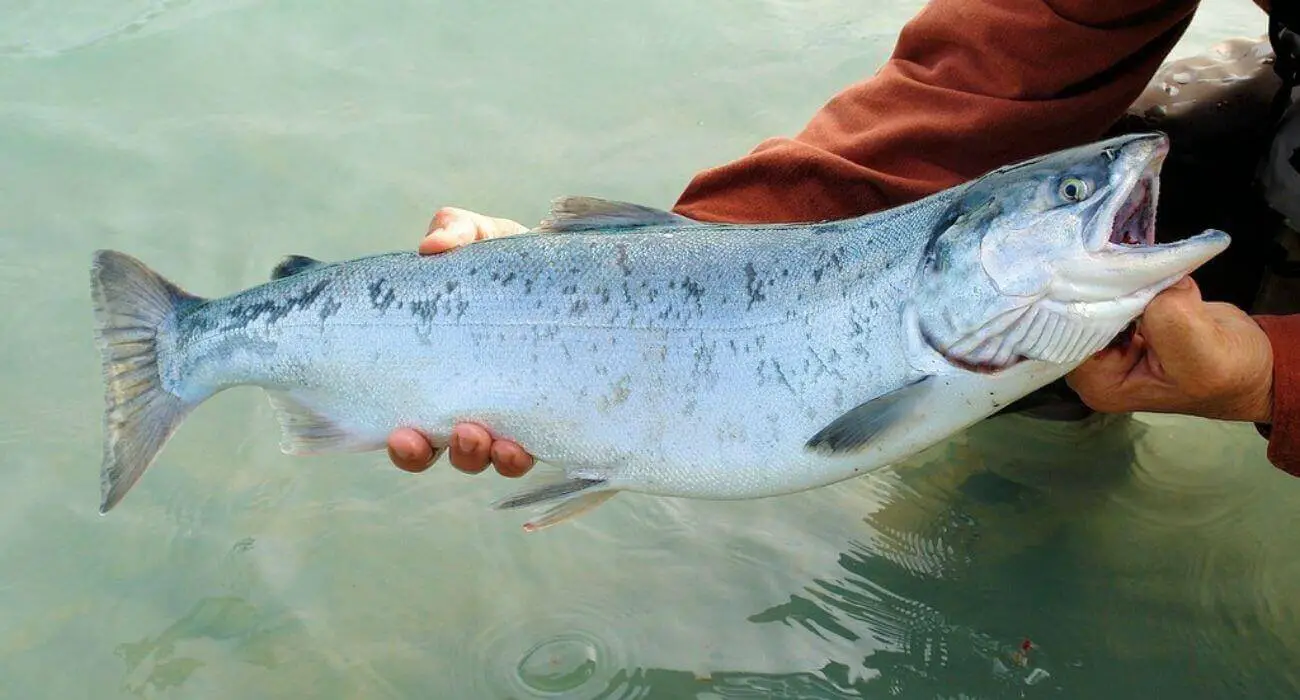As an Amazon Associate, I earn from qualifying purchases
Fish do bite in cold weather, though less actively than in warmer conditions. Cold water slows down a fish’s metabolism, which influences their feeding patterns.
Anglers often wonder whether fish are still willing to bite as temperatures plummet. Despite the chill, many species remain active and can be caught with the right techniques. Understanding fish behavior in cold water is crucial for a successful outing.
Cold weather prompts fish to conserve energy and seek stable conditions, often at greater depths or in areas less affected by temperature fluctuations. They tend to feed during the warmest part of the day when the water may be just a few degrees warmer. Driven by a slower metabolism, their bites will be more subtle, so patience and attention to detail become essential. Adjustments in gear, bait, and tactics can greatly improve the chances of a rewarding fishing experience even on the coldest of days. Knowing where to find fish and presenting lures and baits effectively is the key to cold-weather fishing success.
Ice Fishing Intrigue
The world beneath the icy surface of a frozen lake remains a bustling hub of activity, even in the coldest winter months. Many anglers pack away their gear when temperatures plunge, but a dedicated few understand the magic of ice fishing. Embarking on a frozen water adventure, they discover the stillness of the winter air woven with the anticipation of a catch.
Challenging Myths
Ice fishing shatters many misconceptions about fish behavior during the winter. Despite chilly myths, fish do bite underneath the ice. Their metabolism does slow, but appetites persist. Knowing the right techniques is key to successful cold weather angling.
- Fish species and location matter.
- Bait and technique adjustments lead to success.
- Hunger strikes vary during winter periods.
Fishing Through The Freeze
To succeed in ice fishing, anglers must understand the icy ecosystem. Fish find warmer waters, often at different depths, seeking comfort and food. Drilling holes above these zones is the first step to a great catch.
| Strategy | Benefit |
|---|---|
| Correct Timing | Align fishing times with fish feeding hours for a better bite rate. |
| Proper Gear | Use equipment designed for the cold to prevent malfunction and increase efficiency. |
| Jigging Techniques | Mastering this lure movement can entice fish to bite, even in frigid water. |
Patience and persistence go hand-in-hand for anglers willing to brave the cold. While the water’s surface may seem lifeless, beneath the ice lies a vibrant aquatic world. Making the most of the winter season, these intrepid fishers enjoy the serenity and the challenge that ice fishing provides.
Cold Water Dynamics
Think of chilly waters as a slow-motion zone where fish transform their habits. Anglers must adapt too. Understanding how cold affects fish is crucial for success.
How Temperature Affects Fish Behavior
In cold water, fish movements slow down. Seeking warmth, they often migrate to deeper areas where water temperatures are more stable. Cold water makes fish conserve energy. They limit their activities and feed less often.
Key behavior changes include:
- Slowed digestion: Fish take longer to process food.
- Reduced speed: They swim and react more slowly.
- Altered feeding patterns: Feeding times can shift to warmer parts of the day.
Fish Metabolism In Frigid Waters
Fish metabolism is directly influenced by water temperature. As temperatures dive, metabolism rates plummet. This leads to decreased appetite and reduced growth rates in fish.
Metabolic changes include:
| Temperature Change | Metabolic Impact | Behavioral Outcome |
|---|---|---|
| Mild Drop | Slowdown | Less active, selective feeding |
| Sharp Drop | Significant Slowdown | Minimal movement, survival mode |
Fish eat less frequently in cold water, conserving their energy for essential functions. Anglers must note these changes to decide bait and technique.
Species That Thrive In The Chill
As temperatures drop, not all fish tuck away.
Certain species come alive in cold water, providing anglers with exciting winter fishing opportunities.
Understanding which fish bite during the frosty months can transform a serene snowy backdrop into a thrilling fishing excursion.
Cold-water Friendly Fish
Several fish species prefer the cold and remain active. Fish such as trout, pike, and perch do not just survive,
they thrive in lower temperatures. These species possess unique adaptations that keep them feeding and lively, even when ice starts forming.
| Fish Species | Preferred Temperature Range |
|---|---|
| Trout | 40-50°F (4-10°C) |
| Northern Pike | Below 60°F (<15°C) |
| Yellow Perch | 45-70°F (7-21°C) |
Targeting The Right Species
Finding fish in cold weather starts with knowing where they swim.
Trout often lurk in deep, slower-moving waters conserving energy.
Pike, aggressive predators, hunt in shallower weedy areas where they can ambush prey.
Yellow perch group together and seek deep water with plenty of food.
- Use live bait such as worms or minnows.
- Employ slow-moving lures to mimic lethargic prey.
- Look for underwater structures, a favorite for these species.
Tackling The Ice
Tackling the Ice presents a unique challenge for anglers. Cold weather fishing can yield impressive catches. Imagine the silent world beneath the ice, where fish lurk, awaiting your lure.
Essential Gear For Ice Fishing
Successful ice fishing demands the right tools. Let’s break down the gear you need:
- Auger: A manual or powered auger drills through ice.
- Rods and Reels: Short, lightweight rods are best.
- Lures and Jigs: Brightly colored for visibility under ice.
- Ice Shelter: Portable, insulated shelters keep you warm.
- Heater: Safe, portable heaters prevent freezing.
Safety Practices On The Ice
Staying safe on the ice is vital. Follow these tips:
- Check Ice Thickness: At least four inches for fishing alone.
- Go Prepared: Carry safety spikes and a life vest.
- Buddy Up: Never ice fish alone for extra safety.
- Inform Others: Tell someone your location and return time.
Bait And Lure Strategies
Fishermen often wonder if fish still bite when the water gets cold. Cold weather changes fish behavior, making the right bait and lure strategies crucial. Understanding how fish react to colder temperatures helps anglers increase their chances of a successful catch. Focus on the right techniques, and even the chilliest days can yield impressive results.
Choosing Bait For Cold Water
In cold water, fish metabolism slows down, and their feeding habits change. Choose baits that move slowly and are easy for fish to catch. Consider the following:
- Live Baits: Worms, minnows, and other live baits are ideal as they naturally move slowly and attract fish.
- Scented Baits: Enhanced with scents, these baits appeal to the fish’s keen sense of smell, triggering bites in lethargic fish.
- Small Baits: Smaller offerings are more tempting since fish prefer not to exert much energy in cold water.
Match the hatch by using baitfish present in the water. Fish are more likely to strike at familiar prey, even in colder temperatures.
Lure Techniques That Deliver
When the temperature drops, using the right lure techniques can make a huge difference. Present lures in a way that mimics the natural, slow movements of prey in cold water:
- Slow Retrieve: Keep things moving sluggishly to match the pace of cold-water creatures.
- Jigging: A vertical motion can entice fish as it mimics the behavior of prey struggling against the current.
- Suspending Lures: These lures hang in the water column and are perfect for tempting picky fish.
Experiment with depth and speed until you find the sweet spot that triggers bites. Patience pays off in cold weather fishing.

Timing Your Trip
As a fish enthusiast, knowing the best times to cast a line is key, especially in colder climates. Chillier waters can impact fish behavior. Still, with the right timing, you can enjoy successful catches. Let’s dive into the prime moments for ice fishing and how weather influences fish activity.
The Best Times For Ice Fishing
Crisp mornings and late afternoons often yield the best results when ice fishing. Fish tend to feed during these times, making them more likely to bite. Here’s a quick guide:
- Dawn: Fish are active as they search for breakfast.
- Dusk: A final feeding frenzy before nightfall can lead to successful catches.
Plan your trips around these windows to maximize your chances of a good haul.
Weather Patterns And Fishing Success
Understanding the impact of weather can significantly affect your fishing outcomes. See below for how different conditions can affect fish activity:
| Weather Condition | Fish Activity Level |
|---|---|
| Stable, Cold Weather | Fish adapt and maintain a consistent bite pattern. |
| Sudden Temperature Drops | May cause fish to become less active and harder to catch. |
| Overcast Skies | Can lead to more active fish and potential for a successful trip. |
Keep an eye on the forecast, and seek out the most promising conditions for your fishing adventures.
The Secret Holes
When water temperatures drop, many anglers hang up their gear. Yet, the secret to successful cold-weather fishing lies within the knowledge of the “secret holes”. These are places where fish congregate. In cold conditions, fish slow down but they still need to eat. The key is finding those hot spots where fish are biting.
Locating The Fishing Hot Spots
Finding the right spot is half the battle. Fish tend to gather in areas that offer food, shelter, and slightly warmer temperatures. Ledges, submerged structures, and depth changes often serve as fish magnets. Use a map or a fish finder to pinpoint these locations. Look for places where the current is slower, as fish prefer to conserve energy when it’s cold.
Important tips include:
- Seek out underwater structures like logs or rocks.
- Use technology to your advantage with sonar devices.
- Focus on areas that offer protection from currents.
Reading The Ice And Water
For ice fishing, thickness and quality of ice provide hints. Clear, solid ice is often safer and indicates stable conditions, which can lead to better fishing. On the other hand, open water fishing requires different knowledge. Look for signs such as flocks of birds, indicating active feeding. Darker waters absorb more sunlight and can be warmer, attracting fish. Water inflows can also signal nutrient-rich waters where fish might be more active.
| Ice Tips | Open Water Tips |
|---|---|
| Check ice quality, clear and solid is best. | Notice bird activity, it can reveal fish below. |
| Measure ice thickness for safety. | Look for darker water areas for warmth. |
| Observe snow patterns on ice for structure hints. | Watch for water inflows rich with nutrients. |
In all, detecting the secret holes whether in ice or water, comes down to reading nature’s cues and understanding fish behavior. Equip yourself with this knowledge, and even in the cold, you might just land a satisfying catch.

Mastering The Technique
Fish can still bite even when water turns icy cold, but success hinges on technique. Fish behave differently as temperatures drop. They move slower and eat less. Anglers need to adjust their methods. The right approach can turn a chilly day into a hot streak of catches. Let’s explore how to master the techniques of cold water fishing.
Jigging In Cold Water
Jigging is a method that can entice fish even in the frigid waters of winter.
- Choose the right jig: A small, subtle lure works best when fish are lethargic.
- Slow down: Movements should be gentle and deliberate.
- Stay vertical: Keep the line as vertical as possible to feel light bites.
- Watch your line: A slight twitch can signal a bite.
Mastering jigging requires patience and attention to the subtle cues from your line.
Setting The Hook Under Ice
Setting the hook in cold weather, especially under ice, is tricky. The technique is different from a warm water bite.
- Be gentle: A sharp tug can tear the hook from the fish’s mouth.
- Use the right gear: A sensitive rod lets you feel the bite; a strong line secures the catch.
- Keep tension: Once hooked, keep a steady tension to avoid losing the fish.
Adapt your hook set to the resistance a cold water fish gives. This can make all the difference in landing a catch or telling a story of the one that got away.
From Catch To Kitchen
Even in the chill of winter, fish lurk beneath the icy surfaces, ready for the skilled angler to coax them into a day’s catch. Transforming these cold-water bites into delectable meals brings joy and satisfaction post-adventure. Grasp the essentials of preserving the freshness and explore delicious recipes. These are suitable for the unique flavors of cold-water catches.
Preserving The Freshness
Securing the quality of your catch starts the moment you reel it in. Implement these steps to ensure peak freshness.
- Clean the fish as soon as possible.
- Use ice slurry to maintain a cold temperature.
- Store the fish in a chilled cooler.
- Prevent air exposure using tight packaging.
Delicious Recipes For Cold-water Catches
Hearty and warming dishes await your kitchen skills. Here are some favorite recipes:
| Recipe | Primary Fish | Cook Time |
|---|---|---|
| Herb-Crusted Trout | Trout | 20 mins |
| Smoky Pike Chowder | Pike | 45 mins |
| Pan-Seared Bass | Bass | 15 mins |
Follow precise steps for each recipe. Use fresh herbs and spices to enhance flavors.
- Prepare ingredients ahead of cooking time.
- Follow the recipe steps without rushing.
- Adjust seasoning to taste before serving.
Frequently Asked Questions On Do Fish Bite In Cold Weather
Is It Good To Go Fishing When Its Cold?
Yes, cold weather can be good for fishing, as fish often group together and become easier to locate. However, some species may reduce their activity, so adapting techniques is essential.
What Kind Of Fish Bite In The Cold Weather?
Certain fish like trout, pike, and perch remain active and will bite in cold weather. Cold water species typically adjust well, maintaining feeding patterns despite lower temperatures.
Do Fish Bite In 40 Degree Weather?
Yes, fish can bite in 40 degree weather, but are generally less active and feed less aggressively than in warmer temperatures. Cold water slows their metabolism, making them conserve energy.
How Do You Fish In Cold Weather?
Dress in layers to maintain warmth. Use smaller, lively baits for sluggish fish. Keep fishing holes clear of ice. Adjust your techniques to slower fish metabolism. Stay safe on ice and check weather conditions.
Do Fish Bite More In Colder Temperatures?
Fish can still bite in cold weather, but their metabolism slows, making them less active and less likely to feed aggressively.
Conclusion
Winter fishing can certainly test your patience, but it’s clear that fish do indeed bite in cold weather. With the right gear and techniques, anglers can enjoy success even when temperatures drop. Remember to adapt to the conditions, keep your presentation slow, and stay persistent.
Bundle up, stay safe, and happy fishing through the chill!
As an Amazon Associate, I earn from qualifying purchases

